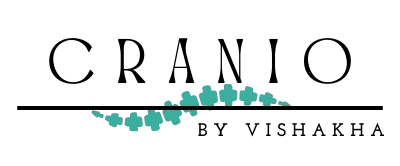Craniosacral Therapy for Migraines and Headaches: Does It Actually Work?
Migraines and chronic headaches can disrupt every aspect of life from your work and focus to sleep and mood. If you’ve tried everything from medications to lifestyle changes and still find yourself in pain, it may be time to explore Craniosacral Therapy (CST) a gentle, hands-on therapy that addresses the root of tension and imbalance in your body.
In this post, we’ll explore how CST can support migraine and headache relief, what science says, what to expect in a session, and whether it’s the right fit for you.

✅ What Is Craniosacral Therapy (CST)?
Craniosacral Therapy is a subtle bodywork technique that works with the craniosacral system the membranes and cerebrospinal fluid that surround your brain and spinal cord.
By applying gentle pressure to the skull, spine, and pelvis, a trained therapist can help release restrictions in the nervous system. This often results in reduced pain, deeper relaxation, and enhanced self-regulation.
💥 How Does CST Help with Migraines and Headaches?
Here’s how CST may benefit those struggling with recurring headaches and migraines:
1. Releases Tension in the Head and Neck
CST helps unwind tension patterns in the cranial bones, jaw, upper spine, and soft tissues areas often linked to migraines.
2. Balances the Nervous System
Migraines are often a result of nervous system overload. CST works with the parasympathetic nervous system, helping shift your body from “fight or flight” to “rest and repair.”
3. Improves Fluid Flow
Restricted movement of cerebrospinal fluid may contribute to intracranial pressure. CST supports better fluid circulation, which can ease head pressure.
4. Addresses Root Causes
Rather than masking symptoms, CST gently works with your body’s patterns, supporting deep healing over time.
🧠 What Does Science Say?
While large-scale studies are still limited, early research and clinical reports show promising results:
- A 2012 pilot study published in Evidence-Based Complementary and Alternative Medicine found significant pain reduction in patients with migraine after CST.
- Many case reports highlight improvements in frequency, intensity, and duration of headaches.
- CST is particularly effective for tension-type headaches, often linked to postural stress and muscle strain.
🙋♀️ What to Expect in a Session
- You lie fully clothed on a table.
- The therapist places their hands gently on your head, sacrum, or spine.
- Most clients feel a deep sense of calm, warmth, or emotional release during or after the session.
- Some may notice improvement after 1–2 sessions, while others benefit from a series over time.
📍Who Can Benefit from CST for Migraines?
- People with chronic migraines
- Those with tension-type headaches
- Individuals with stress-induced headaches
- Anyone who prefers a drug-free, natural approach
- People with head injuries or post-concussion symptoms
⚠️ When to See a Doctor
If your headache is sudden, severe, or accompanied by vision loss, confusion, or numbness, consult a medical doctor immediately.
📲 Let’s Connect on Instagram
Curious to see how a real session looks or hear stories from people who’ve tried CST for migraines?
👉 Follow me on Instagram: @craniobyvishakha
I share behind-the-scenes from my sessions, real client journeys, and quick insights into how craniosacral therapy works.
🔍 Final Thoughts: Does It Actually Work?
If you’ve been asking, “Can craniosacral therapy help my migraines?” the answer is: yes, it will.
CST offers a gentle, deeply therapeutic approach to helping your body heal from within. Many clients find real, lasting relief often when everything else has failed.
craniosacral therapy for migraines, craniosacral therapy for headaches, natural migraine relief Gurugram, migraine therapist near me, alternative therapy for migraines, how to relieve tension headaches naturally, CST for head pain, migraine relief without medication, craniosacral therapy India
